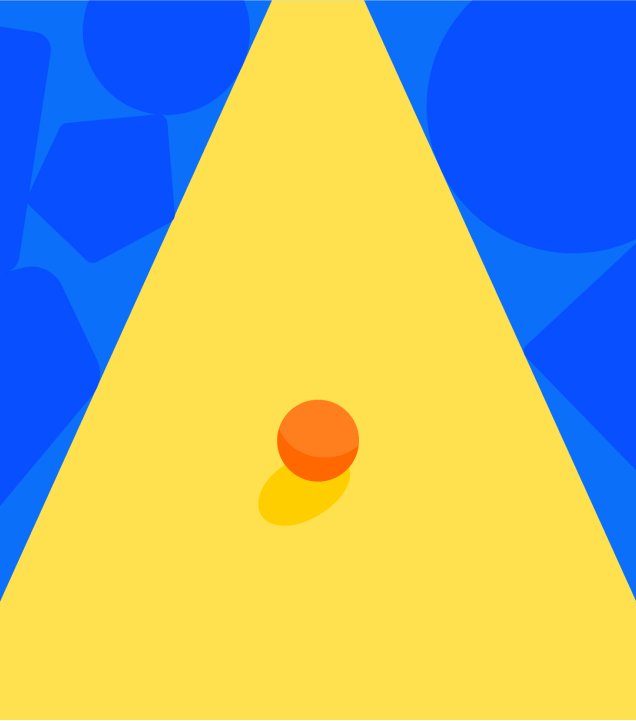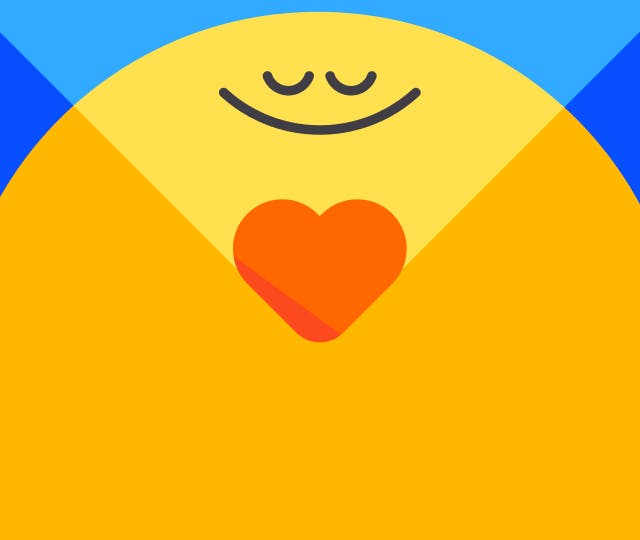Guided imagery and visualization meditation
Researched and written by our mindfulness and meditation experts | Learn more
Oct 2, 2023
Guided imagery is a focused practice that involves each of the five senses to ignite positive healing messages throughout the mind and body. The practice is often interchanged with visualization, self-hypnosis and guided meditation, but it has its own set of techniques. The benefits of guided imagery are vast — there is research that shows the practice can reduce fear and anxiety, lessen the frequency of headaches and has been proven to decrease psychological distress in cancer patients. What’s more, it’s a practice that can be introduced to your at-home mindfulness routine at any time.
What is guided imagery?
With guided imagery, you utilize all of your senses — vision, taste, sound, smell, and touch — to build images in the mind that your body feels are as real as external events. This doesn’t mean that during the practice in your “real time” physical body you will be smelling, hearing and tasting objects, but your mind will be visualizing the makings of each sense, versus more traditional guided meditation that is focused purely on the mental state without the addition of whole-body senses. Guided imagery can actually stimulate changes in heart rate, blood pressure and respiratory patterns, because of the deep, physical mind-body connection.
Think of it as a much more amplified version of having a food craving constructed from memory, then noticing your salivary glands become active. Your mind and body are connecting over an image composed in your head that has touched each of your senses. Now, what if you could replicate that for stress management and pain relief?
How is guided imagery different from visualization? Visualization is when an individual focuses purely on visuals. Guided imagery constructs an immersed state of mind throughout the entire body by visualizing all five senses altering. How does this differ from hypnosis? More often than not, hypnosis requires a participant and a hypnotist. The hypnotist introduces suggestions to the participant to help enter the subconscious mind. With guided imagery, you are using the sole power of your own imagination.

Guided imagery techniques
Just as with any mindfulness practice, the more you do it, the more natural it becomes. It’s important to begin in a relaxed atmosphere where you feel physically comfortable. And, just like traditional meditation, the mind wandering away from “the narrative” is completely fine and normal. You can experiment with incorporating calming music or practicing in silence, as you will intuitively feel if this helps or distracts your practice. Placing your hands on your chest or on top of one another might also be helpful as an “anchor” to your guided imagery exercises. Research shows that less than 10 minutes of guided imagery can produce many benefits, so feel free to set a clock for the amount of time you have available, or allow your body to do its thing naturally.
Many people find it helpful to start practicing guided imagery exercises by first re-constructing a pleasant memory: how you felt, the aroma, the temperature, where you are within the space. Think of it as your favorite daydream coming to life. Focusing first on a memory can help reduce intimidation around the practice. Instead of just thinking about the visual aspect of your memory, begin connecting each sense to the construct. Starting step-by-step without expectation, as with any mindfulness meditation technique, is the key to reaping benefits.
For example, if you’re at the beach, you’re lying on a striped blue and green towel but your feet are playing in the warm sand, the sand is in between your toes and you can feel the grains slowly sliding between each toe; you have no tension in your body, your jaw, or your face; your eyes are closed facing the clear blue sky, and your salty skin is warm from the sun and the sand beneath you; the ocean is calm today, but you can still hear the light crashing of waves in the distance; you are content and healthy in this moment; you feel the natural rise and fall of your chest breathing; so on and so forth. From here, you can continue constructing images of what your beach day looks like (perhaps you jump in the ocean, enjoy a mango, or walk along the shore).
Then, you can start to build new constructs of imagery that go beyond memory into dreams, life goals and more. There are a myriad of options you can choose to focus on as your imagery. You can imagine bodily ailments physically healing, or even picture yourself mastering a creative or athletic craft such as surfing, acting, snowboarding or public speaking. The essence of guided imagery is that if you can see it and you can feel it, you can become it.
The benefits of guided imagery
Guided imagery meditation has been clinically proven to reduce stress, relieve pain and even lessen the occurrences of insomnia amongst hospitalized patients. According to the Mayo Clinic, guided imagery relaxation is routinely used for surgery patients — sharing a study that showed patients who participated in two to four guided imagery sessions required less pain medication than those who didn’t participate.
Because guided imagery is multi-sensory, it’s often used to help a practitioner get in touch with subconscious levels of wisdom within them. Many people practice guided imagery to help envision and place themselves in their best, most healthy and happy state.

How to start taking care of your mind with Headspace
Are you taking proper care of your mind? You can with Headspace. Our convenient online guided sessions include visualizations and guided imagery that can help you find increased compassion, greater focus, less anxiety, and improved feelings of well-being and happiness.
If you’re looking for an introduction to different types of meditation, check out the 10-day beginner’s course on the essentials of meditation — available with your membership or free trial. From there, once you gain more experience and confidence, you can explore the whole library of meditations and exercises, covering everything from sleep, compassion, and sports to anger, stress, focus, and more. Get started now!
Be kind to your mind. Start with a free trial of Headspace.
READ NEXT: What is visualization meditation?


Be kind to your mind
- Access the full library of 500+ meditations on everything from stress, to resilience, to compassion
- Put your mind to bed with sleep sounds, music, and wind-down exercises
- Make mindfulness a part of your daily routine with tension-releasing workouts, relaxing yoga, Focus music playlists, and more

Learn more about meditation

Stay in the loop
Be the first to get updates on our latest content, special offers, and new features.
By signing up, you’re agreeing to receive marketing emails from Headspace. You can unsubscribe at any time. For more details, check out our Privacy Policy.
- © 2025 Headspace Inc.
- Terms & conditions
- Privacy policy
- Consumer Health Data
- Your privacy choices
- CA Privacy Notice







